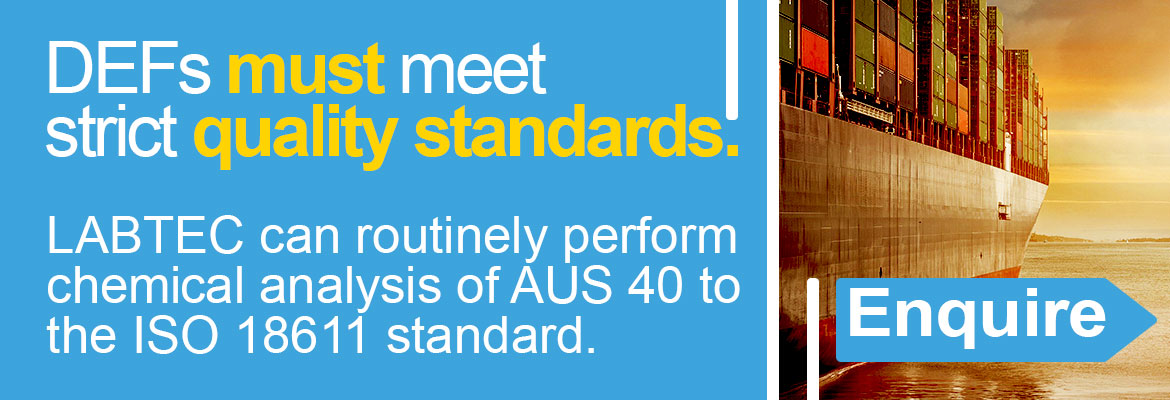The maritime sector is increasingly becoming exposed to nitrogen oxide (NOx) emissions legislation, which is being steered globally by the International Maritime Organization (IMO) and by regulatory authorities at a national level.
The regulations generally aim to curb NOx emissions. One way to achieve this is by using Selective Catalytic Reduction (SCR) to convert NOx in the exhaust stream into nitrogen and water prior to release into the atmosphere.
Aqueous Urea Solution (AUS) 40 contains 40% high purity urea in 60% water and is required to operate Selective Catalytic Reduction (SCR) converters. Manufacturers of AUS 40 need to conduct quality testing to ensure their product not only contains the appropriate amount of urea but also meets the range of specifications listed in ISO 18611.
AUS 40 Quality Testing Specifications
| Parameter |
Value |
Unit |
|
| Urea |
39.0 – 41.0 |
% (m/m) |
|
| Density at 20°C |
1105 – 1177 |
kg/m3 |
|
| Refractive Index at 20 |
1.3947 – 1.3982 |
- |
|
| Alkalinity as NH3 |
< 0.5 |
% (m/m) |
|
| Biuret |
< 0.8 |
mg/kg |
|
| Aldehydes |
< 100 |
mg/kg |
|
| Insoluble Matter |
< 50 |
mg/kg |
|
| Phosphate (PO4) |
< 1.0 |
mg/kg |
|
| Calcium |
< 1.0 |
mg/kg |
|
| Iron |
< 1.0 |
mg/kg |
|
| Magnesium |
< 1.0 |
mg/kg |
|
| Sodium |
< 1.0 |
mg/kg |
|
| Potassium |
< 1.0 |
mg/kg |
|
Reference: ISO 18611 – Marine NOx Reduction Agent AUS 40.
The use of Diesel Exhaust Fluids (DEF) such as AUS 40 also improves fuel efficiency, which is an added bonus as fuel is one of the largest vehicle operating expenses regardless of industry.
LABTEC: the expert choice for AUS 40 Testing
We’ve expanded our scope from providing chemical analysis of AUS 32 to the ISO 22241 standard, to also covering the array of testing required for AUS 40 to the ISO 18611 standard. Get in touch to see how we can help.
